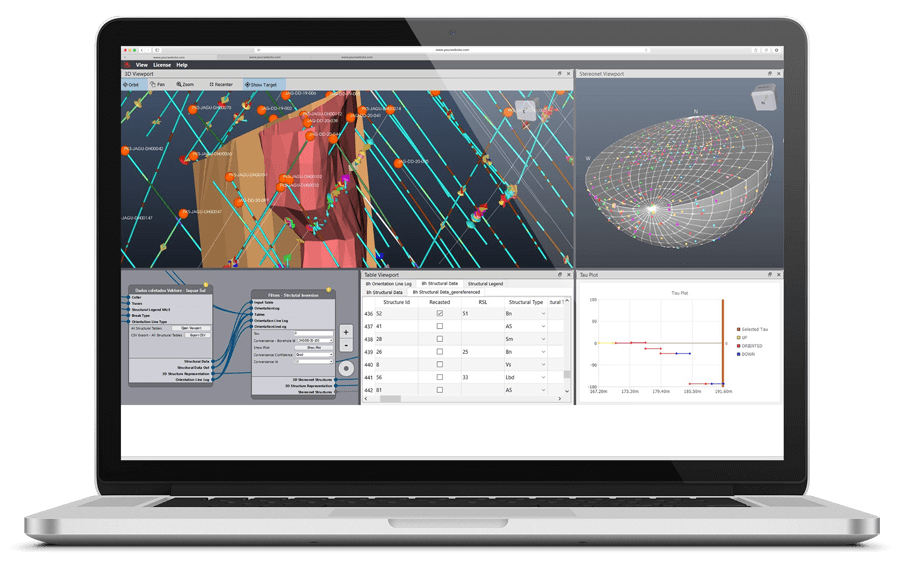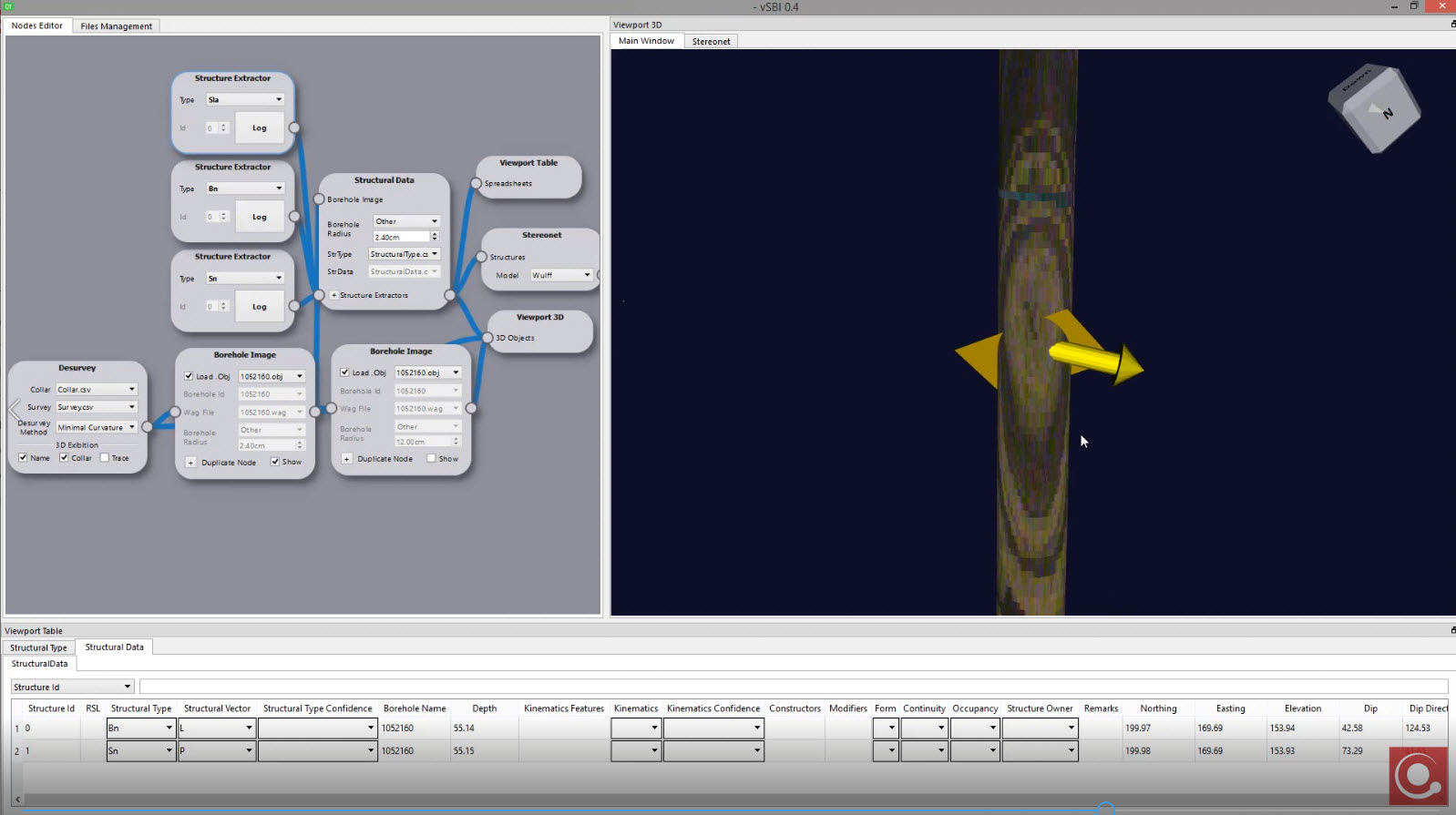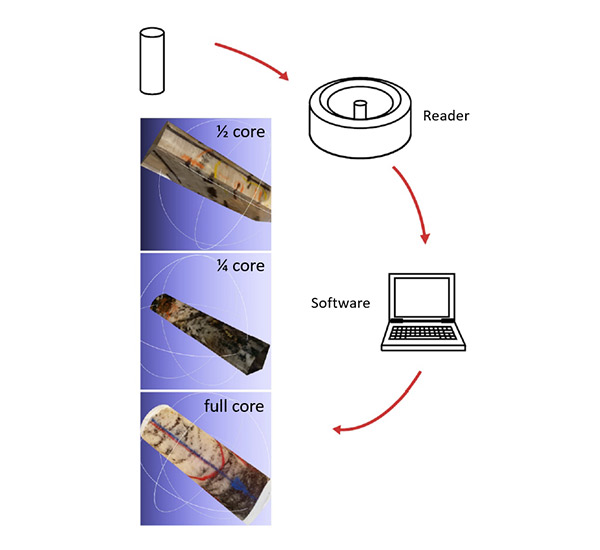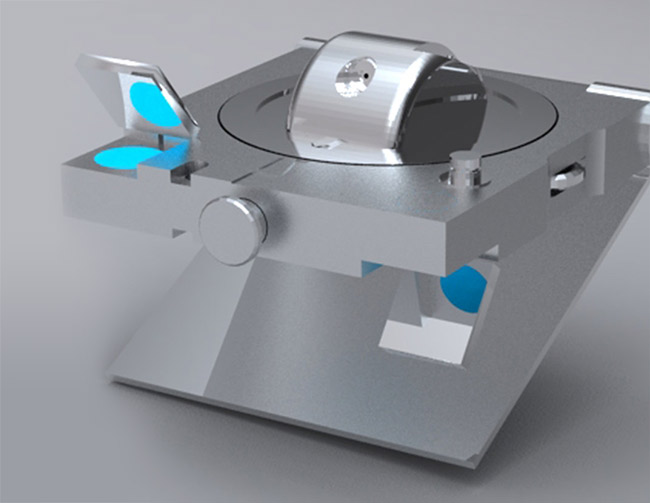The first software to integrate structural and geological logging, using innovative modules to link and visualize structural data in 3D and in real time right at the core shack!
Our Tools
Ore.node Software

Ore.node incorporates the Vektore Structural Logging Method (developed by R. Monteiro in 2002), which allows users to extract planes and lines independently of each other, as well as relevant assignments of kinematic and asymmetric features that Ore.node recasts into its proper desurveyed space. Ore.node is a node-based, user-friendly and fast software that empowers users to quickly understand their targets while logging is taking place, allowing for faster key drilling decisions.

vSBI Software
Although televiewer is a remarkable tool for acquiring structural data, industry-available software does not enable the extraction of linear, kinematic and asymmetry features from these images, limiting the interpretation to the collection of planes. vSBI© offers the solution, allowing users to increase their understanding of their project architecture as well as the geometry of the mineralization
This implementation significantly improves the understanding of complex orebody architectures, which are later validated by underground mining, and it has been successfully applied by our team globally.
The vSBI software is currently stand-alone, however, it has been designed for easy portability into the Ore.node software. The software constructs an in-real space, to scale cylindrical wireframe of the borehole with desurveying applied. The televiewer image is draped around the desurveyed cylinder allowing the user to visualize the whole borehole image in its original form. The software provides tools to extract planes and lines directly from the 3D image-object, and users can describe kinematics and asymmetries, including way-up features if present. The structural data is stored in its internal database and wireframes of structures, 3D images and the database can be exported for additional analysis when required.

vKore 3D Scanner System
A 3D modular scanner, node-based 3D software application for structural analysis and virtual core library acquisition. It is the first 3D core imaging tool designed to obtain a permanent record of significant structural features observed in core samples, particularly the mineralization-related structures – key factors for Structural Vectoring®. The system is composed of the vKore Reader and the vKore Software
The vKore® Reader is the first core imaging device designed to scan ¼, ½ and full core segments; it is portable, rugged, lightweight, fast and it can also be powered by car batteries for remote use. It is easily harmonized with normal geological logging workflows at the core shack. The use of the vKore Reader and Software increases efficiency and efficacy while logging and handling core at the core shack. It provides validation and auditing through record keeping and virtualization of core segments, allowing for on-site and off-site analysis and validation. It’s particularly useful for acquiring digital images from relevant core segments and it also optimizes core handling by eliminating the need for core storage. (US Patent No. 10,235,760 B2, Mar. 19, 2019)
The resultant 3D high-accuracy and high-quality digital image, the virtual core, can be digitally stored and electronically transferred off site to any location worldwide for processing lines and planes, including kinematic features and asymmetries associated with faults and folds. The virtual core and its structural features are digitally stored in a virtual core library and a database. Their spatial location, orientation and characteristics are directly extracted from within the software’s 3D viewport. This allows for the structural information to be validated and audited by experts or prospective investors, even after the core has been cut, split and pulverized for chemical analysis. The software is currently stand alone, however, the process to port it into the Ore.node software has been planned for – it will allow the vKore system to take advantage of the other facilities provided by Ore.node.

About the vKore Reader and Software Workflow
-
- Core segments (full, one-half and one-quarter) are placed inside the vKore Reader for imaging and scanning
- Images and geometrical information are directed to the vKore Software for processing and creation of the 3D virtual core
- Point Cloud, geometry adjustments and image warping creates the 3D virtual core that can be stored in a virtual core library
- Planes and lines are extracted independently of each other directly from the 3D virtual core
- Planes and lines are described and logged into vKore’s database
- Planes and lines are plotted into a fully functional 3D stereonet for visualization and analysis
- Data, images and 3D objects are exportable to popular formats for exchange and linking with other software
ML-Compass
The ML-Compass (US Patent number 6701631; Monteiro and Laamanen, 2004 (Authors); intellectual property of Vale S.A.) was developed to overcome the problem of collecting structural data in locations where the magnetic field is distorted, where conventional magnetic compasses are rendered useless (such as with underground mines, highly magnetic rocks or ore, locations with high magnetic inclination).
This compass can be used underground and in open pit environments and was also tested in high-latitude areas. It is simple to use and results can be obtained in real time. Vale S.A. kindly allowed Vektore to use this tool while delivering services to Vektore’s clients.
